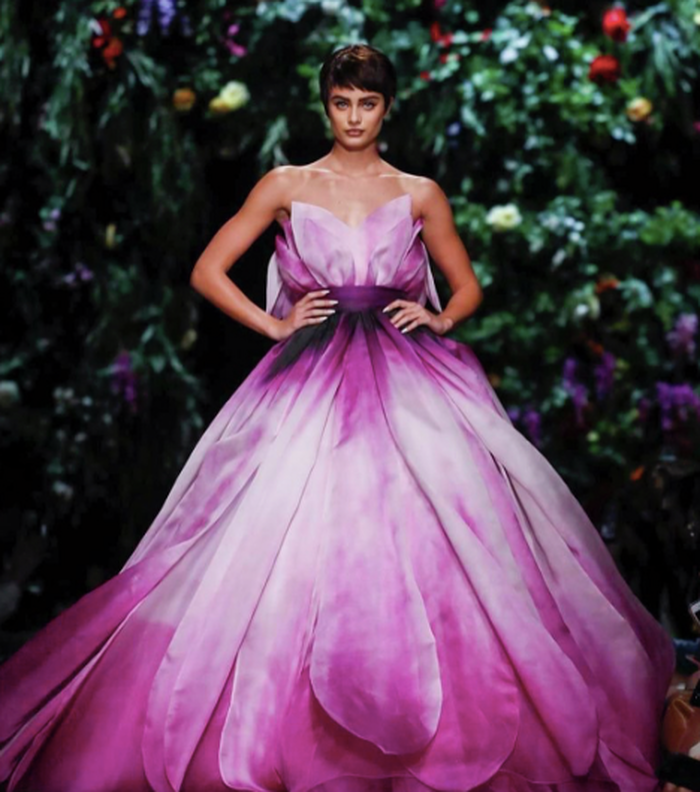Uniform in fashion: uniting or oppressive?
Vivienne Hopley-Jones discusses the history of uniformity in fashion and how this affects our own personal style choices
Fashion is inherently woven into the fabric of our society; individual style is both a personal and societal reflection of political, cultural and moral values, traditions and trends. Through our clothes we project a vision of ourselves onto the outside world: this is who I am, this is who I choose to be. This artistic expression of the individual is the empowering personal nature of fashion. Yet, how truly free are we in choosing our clothes?
“There has always been an inherent link between uniform and ownership”
The duality is in that with the opportunity for expression and individualism comes the possibility for the opposite, that is uniformity and repression. The emphatic potential of clothing in relation to power has not been lost throughout history: the origins of uniform within the military were a direct consequence of the increasing ownership of soldiers by their superiors. There has always been an inherent link between uniform and ownership, especially in this militaristic sense.
This militarism and uniform has been explored artistically by creatives on the runway. American menswear designer Thom Browne produced a bold and brilliant collection at his spring/summer 2014 menswear show inspired by military history. The show was set in the historic and grandiose École Militaire, a Parisian military school within spitting distance of the Eiffel Tower. Browne’s collection lived up to its iconic setting; striking and playful, doll-like men marched the passages of the iconic baroque Parisian building. Strong, bold and stereotypically ‘masculine’ figures were interlaced with sharp waistlines and fine, delicate frills, while broad-shouldered jackets top curved, yet substantial, skirts. The porcelain skin of the model ‘soldiers’ with their bold red lip evokes both a sense of nationalism which fits with the scheme of the collection, but also adds to this doll-like image. The models became toy soldiers in a toy castle, a Gulliver moment brought to life before the fashion scene.
When looking at the modern fashion industry itself, in an external and un-artistic sense, the issue of uniformity is unavoidable. Tall, incredibly thin, and preferably white and blonde is still the unrealistic and unrepresentative ideal of beauty which society hails and to which, from birth, we are all indoctrinated to conform. The uniformity of the industry can also be seen in fast fashion, which contributes to the devaluing of clothing. The speed with which high street brands mass produce the same ‘on trend’ items can make it incredibly hard to achieve any sense of individual style. In this way clothes become something we can hide behind: instead of standing out and expressing ourselves, we can blend in and, in fact, we are often encouraged to do so. Uniforms are employed in schools in the United Kingdom with the purported view to cultivate a sense belonging, however what constitutes belonging? And where is the line drawn between this and ownership?

The Blossoming of Jeremy Scott and Moschino
Ties between belonging and ownership are considered in Margaret Atwood’s dystopian novel The Handmaid’s Tale, recently made into a series for Channel 4. The red uniform of the Handmaid’s which Atwood envisaged are brought to life with a pressing vitality. The colour red brings with it juxtaposing connotations of desire and violence and the strict uniform itself signifies the Handmaid's subordinate rank. It is a symbol of their belonging to the ‘Commanders’, to whom they are sexually and emotionally enslaved, a terrifying exemplar in the ways in which clothing can be used to create repressive uniformity and restrict individuality.
But the show also suggests the possible revolutionary identification that this uniform creates between the women, perhaps indicating in a crudely Marxian sense the power of a self-realised class. As Ofred states, “they shouldn’t have given us a uniform if they didn’t want us to be an army.” This epitomises this debate and leads to the conclusion that clothing, including uniform, cannot be assigned into a binary categories. Unity and alienation, ownership and belonging, freedom and oppression, clothing is inseparable from its social and political context
 News / Newnham students warned against using ‘secluded or concealed routes’ in evening after student followed16 July 2025
News / Newnham students warned against using ‘secluded or concealed routes’ in evening after student followed16 July 2025 News / Meta opens £12 million lab in Cambridge 11 July 2025
News / Meta opens £12 million lab in Cambridge 11 July 2025 Lifestyle / Reflections on rowing10 July 2025
Lifestyle / Reflections on rowing10 July 2025 News / Write for Varsity this Michaelmas13 July 2025
News / Write for Varsity this Michaelmas13 July 2025 News / University applies for extension to injunction against protesters 15 July 2025
News / University applies for extension to injunction against protesters 15 July 2025










